My last month with the Swift GLX Hybrid sees it return to day-to-day driving duties, in the kind of urban environments it was built for.
Last month’s freeway driving expedition showed off some surprising strengths and less surprising weaknesses for the diminutive hatch (read part two for more on this), but with another month behind the wheel where do our thoughts settle on it?
After all, the Swift is a staple of Australian roads, a car which, for many people will even be their first car. Is it still one of the best options?
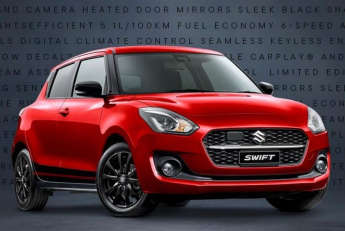
Read on to see where we landed.
Is the Suzuki Swift still good value? What is the sweet spot in the Swift range and what else should you consider?
In previous chapters, we’ve talked about the impressive amount of equipment on offer in our top-spec GLX, which starts from $29,490 drive-away.
We’ve talked about how it manages to balance a solid amount of extra equipment at its price when stacked up against competitors like the Toyota Yaris and MG3, but is the GLX the sweet spot in the Swift line-up?
The answer is yes, because at only a $2500 price premium over the base automatic the GLX gets conveniences like a wireless phone charger, better seats with heating, a leather wheel, and climate control, not to mention the extra active safety kit no offered on the base car, like blind spot monitoring and rear cross-traffic alert.
So, while it’s not as affordable as it once was, the GLX is now the right money in the Swift range.
.jpg)
It feels a little cynical that the fun turbo engine option has been stripped from the range, with the entire Swift formula refined to a point in terms of complexity. The one outlier being the base manual transmission option.
The one area where you do feel a little nickel-and-dimed is the fact the spare wheel is an optional extra.
.jpg)
Any incidents in the last month with the Suzuki Swift?
Actually it’s funny we got to mention the repair kit, because I admittedly did use it to get myself out of a pickle with a Porsche Taycan press car.
The Taycan developed a slow leak, and with a completely flat (and very expensive tyre) to wake up to, I went for the nearest and easiest solution to get it to a spot where it could be repaired - the Suzuki’s underfloor storage area.
.jpg)
As far as I could tell, the Porsche didn’t even have a repair kit. I suppose if you’re wealthy enough to have a $321,000 before-on-roads Taycan, you can afford the inconvenience of having it towed to a Porsche Centre. But I did find the irony of a $28,000 saving one that costs more than 10x the price a bit delicious.
Also, score one repair kit? Never thought I’d be happy to see one.
Is the Suzuki Swift Hybrid a safe car?
Here’s an interesting question, because it depends how you define safe. According to ANCAP, this new hybrid Swift, relatively, is not a safe car, because it only managed to score one out of five stars.
ANCAP marked the Swift down, noting the crash structure on Australian-delivered vehicles is different to that of the car delivered to Europe, which received a three-star Euro NCAP rating.
.jpg)
It scored just 47 per cent in the adult occupant protection category, one of the lowest scores recorded in recent years. Sounds bad right? The only thing is the previous Swift scored a maximum five ANCAP stars back in 2017, which I think says more about how rapidly ANCAP has moved on more than it tells you about the actual safety of the car.
Still, the structural issues are a concern given most vehicles, no matter where they come from, aren’t singled out by ANCAP for these reasons.
When it comes to active safety this new Swift scores auto emergency braking and lane keep assist, but only the higher grade Plus and GLX we’re testing score blind spot monitoring and rear cross-traffic alert. There’s no rear auto braking.
.jpg)
If you can look past the one-star rating, the Swift has benefits from behind the wheel. For a start, this is about the opposite of the much-maligned active safety experience in many Chinese and Korean cars, which will have overzealous lane keep or driver attention aids that constantly interfere with the experience of driving the car.
As a result, the Swift was often a refreshing change from many of the other cars I’ve been driving lately. It just lets me drive it without trying to take control or incessantly beep at me, or require me to flick through a million menus to disable such features.
Yet despite all this, the forward collision warning proved to only activate when it was really required, and the adaptive cruise control was very good.
What do others think of the Suzuki Swift?
I had some friends and family ride along in the Swift in its final month, all of which, I was surprised to find, liked its chaotic interior, big screen, and heavily updated cabin.
As mentioned in previous chapters, I find this design a bit haphazard, but then again, I’m constantly driving around in what I consider to be more coherent designs from brands like Kia, and even MG these days.
.jpg)
Most people are happy to have a fast and sharp screen with wireless Apple CarPlay like the one in the Swift, regardless of how well it fits into the car’s dash design.
Regardless, the screen works reasonably well. I didn’t run into any weird connectivity issues with wireless Apple CarPlay like I’ve had on some previous long-termer press vehicles, although on occasion the screen would just go blank for a good minute or two and seemingly re-boot, which briefly left you without any multimedia. Weird.
The back seat has enough room for even people around my 182cm height, with the cabin being deceptively spacious despite a descending roofline, and all passengers agree the basic-looking foam seats are surprisingly comfortable, too.
.jpg)
Most of them didn’t even notice the rear doors are entirely comprised of hard plastic, with Suzuki even removing the tiny padded fabric elbow rest found on the front doors, which I think feels cheap.
The same goes for rear seat storage. I explained at length the lack of storage in the front seat in earlier chapters, but the back seat is even worse. It features a small bottle holder in either door, a third one on the back of the centre console, but there are no USB ports or adjustable air vents offered to rear passengers, and there aren’t even map pockets on the backs of the front seats, let alone a drop-down centre armrest.
.jpg)
What has the Swift been like to drive?
A simple pleasure as usual. Everything is well sorted, whether it’s the safety systems, the ride quality, or the handling. As mentioned in previous chapters, the main disappointment is the continuously variable automatic transmission which sucks the life out of what otherwise feels like a well-resolved little car.
If you want to avoid the dreary auto it’s genuinely difficult now, with most small car contemporaries offering either a CVT or worse, a laggy dual-clutch auto. As far as the Swift goes, you can opt for the base manual, which maintains the mild hybrid system but loses some key equipment, but it’s also a shame it doesn’t get the silky smooth take-off the full hybrid rivals offer.
.jpg)
The Swift excels at city duties more than the open road, where it’s more difficult to tell the lack of power from the little hybridised engine set-up. It’s easy to park, with light but reactive steering and excellent visibility out the front.
Visibility out the rear isn't great, with large rear three-quarter panels taking up a fair amount of space. On the flipside though the reversing camera is pretty good. It could be better, like the 360-degree cameras we’re seeing in more Chinese cars, but it’s above par for this small car segment.
Is the Swift hybrid cost effective over the long-term? How much does it cost to service?
.jpg)
By the time we handed the keys back, the Swift’s fuel consumption had plateaued at a solid 4.8L/100km. It’s not Yaris hybrid efficient, sure, but because it’s much more affordable, I’m certainly inclined to forgive it.
As mentioned in the previous chapter, the frustrations are the small 37-litre fuel tank which has you filling up every 650km or so, and the fact it requires 95 RON fuel which might prevent it from being the most affordable car to run in this class, especially when you consider the slightly higher service cost compared to the Yaris.
.jpg)
While a Yaris is locked at $250 a visit for the first five years, the Swift’s price is more variable, averaging out to $391 per visit over the same period. At least it’s not as expensive as the Kia Picanto, which costs upwards of $400 a year.
The Swift Hybrid needs to see a workshop every 12 months or 15,000km, whichever occurs first.
Suzuki Swift 2025: Hybrid Glx
| Engine Type | Inline 3, 1.2L |
|---|---|
| Fuel Type | Unleaded Petrol/Electric |
| Fuel Efficiency | 4.0L/100km (combined) |
| Seating | 5 |
| Price From | $29,490 |
| Safety Rating |
|
Verdict
The Suzuki Swift has a hard-earned reputation as one of Australia’s favourite small cars, and its reputation looks only set to continue with this new hybrid version.
It might not be the most ambitious new small hatch, to some extent even feeling like a deep facelift of the previous version rather than a new generation. It compensates for this with the level of value on offer, its relative simplicity, and its very competent driving dynamics.
Plus, at the end of the day while some may consider its mild hybrid system a disappointment, it saves as much fuel as many of its more complex rivals, proving you don’t need to overthink the solution.
Acquired: February 2025
Distance travelled this month: 674km
Odometer: 6987km
Average fuel consumption overall: 4.8L/100km
Pricing Guides

Range and Specs
| Vehicle | Specs | Price* |
|---|---|---|
| Glx (Qld) | 1.0L, Unleaded Petrol, 6 SPEED AUTOMATIC | $29,790 |
| Glx Shadow | 1.0L, Unleaded Petrol, 6 SPEED AUTOMATIC | $32,490 |
| Glx Turbo | 1.0L, Unleaded Petrol, 6 SPEED AUTOMATIC | $29,790 |







.jpg)
.jpg)
.jpg)
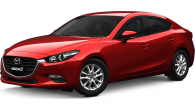
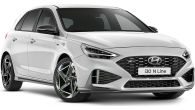
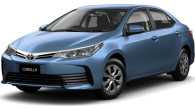









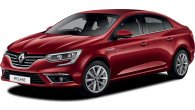









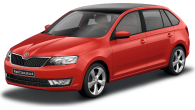
.jpg)

.png)



.jpg)